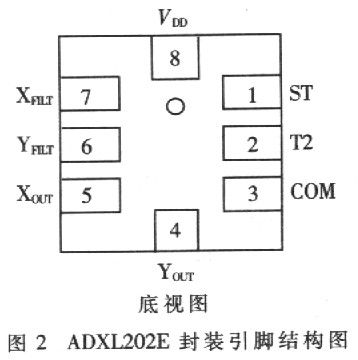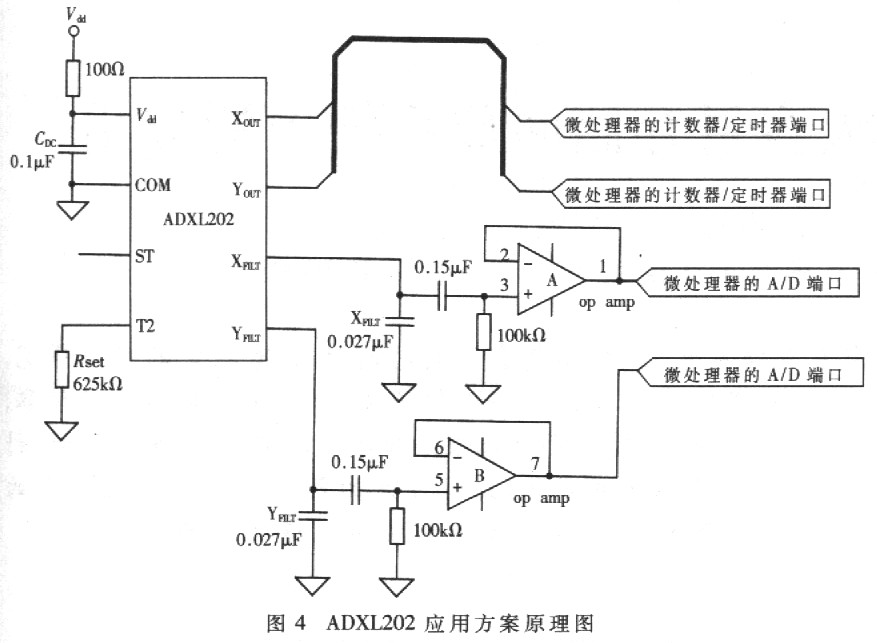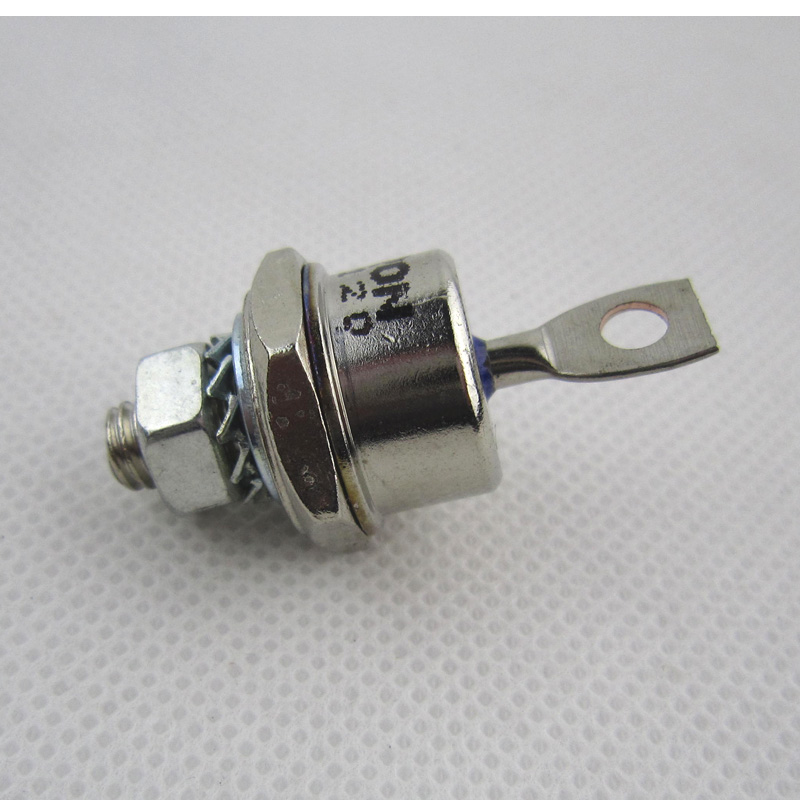Abstract: Based on the analysis of common methods used by thieves to steal cars, the sensor components required for automobile anti-theft monitoring are preferred. In the car anti-theft system, the ADXL202 produced by AD Company of the United States is used as two different sensitive device design schemes of vibration sensor and tilt sensor. The information processing method using this sensor is discussed. This article refers to the address: http:// The anti-theft system of modern cars usually adopts the method of anti-theft warning for the impact and vibration monitoring of the car body. The commonly used devices are mostly magnetic effect sensors. Although the sensitivity of the magnetic effect acceleration sensor is very good, due to the assembly and installation errors of the magnetic sensor, the frequency response is unstable, which may cause the subsequent signal processing circuit and the microcontroller interface circuit to be more complicated, resulting in lower reliability of the system alarm. The rate of false positives is high. In addition, the method of trailer or whole vehicle handling is also a common means of stealing and stealing cars. The most effective way to deal with this kind of theft is to monitor the tilt angle of the car body, while the magnetic effect sensor can not measure the static acceleration, not the car. The measurement of the tilt angle of the body makes it impossible to monitor and warn such theft. In short, the use of magnetic effect sensors does not perform the task of anti-theft monitoring well, which requires a more reasonable and reliable sensor device instead. ADXL202 is a low-cost, low-power, single-chip integrated dual-axis accelerometer designed and manufactured by AD. It is powered by a single power supply of 3~5.25V. The operating current is less than 6mA. It can measure the dynamic range of O~5kHz and ±2g. Or static acceleration, the resolution is 2mg at 60Hz, can be output in the form of digital and analog signals, the volume is only 5mm × 5mm × 2mm; it can monitor the small vibration of the car body and the tilt angle of the whole vehicle at the same time. Applying it to the car anti-theft system not only expands the monitoring range of the system, but also simplifies the system and improves the reliability of the anti-theft system. Therefore, it was selected as a sensor device for a car alarm system. 1 Working mechanism of accelerometer ADXL202 1.1 Basic Principles of Acceleration Measurement Using the ADXL202 The module structure of ADXL202 is shown in Figure 1. It is a measurement module that integrates two sensitive elements with independent measurement directions and perpendicular to each other on a single chip. It is a capacitive acceleration sensor made of polysilicon micro-machining surface technology; One of the plates of the capacitor is attached under the mass supported by the elastic structure of the surface of the sheet, and the other pole of the capacitor is fixed. When the acceleration causes the relative position of the mass to change, the capacitance value also changes; the signal processing circuits of the two sensitive elements convert the respective capacitance changes into a square wave signal whose amplitude is proportional to the acceleration, and the duty cycle modulation (DCM) After that, the analog signal can be converted to a digital signal and output through the pin XOUTYOUT. In addition, the ADXL202 can also output analog signals through the XFILT and YFILT pins. 1.2 ADXL202 pin function introduction The package size of the ADXL202 is LCC-8, and the package and pin diagram are shown in Figure 2. The pin ST is used for self-test of the chip. After VDD is powered on, the ST's working cycle pulse width is changed by about 10% under the action of electrostatic force, which is equivalent to the output signal of 800mg acceleration. This pin can be used for testing. Determine whether the chip works normally; pin T2 needs external RSET resistor, set the duty cycle T2 in the range of 0.5ms~10ms; pin COM as the common ground; pin XOUT, YOUT is used to output digital signal; pin XFILT YFILT plus filter capacitor is used to set the bandwidth range of the detection signal, and the VDD pin is used as the input terminal of the chip power supply. 1.3 Determination of acceleration value Accelerometers can be used for digital or analog signal output using the XOUT, YOUT pins and the XFILT, YFILT pins, respectively. When using digital signals for measurement, the value of the measured acceleration can be obtained by using equation (1) by using the counter/timer port of the microprocessor to separately collect the duty cycle pulse width T1 of the signal and the time length T2 of the duty cycle. . The calculation formula is: The signal diagram is shown in Figure 3. When using analog signals for measurement, the analog signals output from the XFILT and YFILT pins can be directly used, or the digital signals output from the XOUT and YOUT pins can be RC filtered and restored to analog signals. The signal output bandwidth of the first method is relatively wide, but an external voltage follower is required to carry the load; the second method can amplify the output analog signal, but the frequency response characteristic is low. Which output method should be used should be determined according to the specific conditions of use. 2 Automotive anti-theft system design using ADXL202 The thief can cause vibration or tilting of the rut when stealing a car, while the ADXL202 can measure dynamic or static acceleration in the range of 0 to 5 kHz and ±2 g. The measurement of dynamic acceleration can be used for vibration detection; while the static gravity acceleration is used as the input vector, the spatial direction of the object can be determined. 2.1 overall design The ADXL202 is powered by a 3V DC power supply. To reduce the interference of the power supply to the sensor, a connection between the pin VDD and the common ground terminal COM is required. 1μF decoupling capacitor. Since the chip and the microprocessor share a power supply, a 100Ω resistor is added between the power supply and VDD to reduce the interference of the digital signal on the sensor output signal. The T2 pin is externally connected to a 625kΩ RSET resistor, and the output digital signal period is determined to be 5ms, that is, the frequency is 200Hz. The digital signal output from the XOUT and YOUT pins is sent directly to the counter of the microprocessor, the timer port, for the measurement of the gravitational acceleration to obtain the change in the inclination of the vehicle body. The analog signal output from the XEILT and YFILT pins is boosted by the voltage follower and sent to the A/D port of the microprocessor to measure the small vibration of the vehicle body. In car theft prevention, the measurement of the tilt angle of the car body requires that the noise of the signal must be small, which limits the signal bandwidth. For the measurement of vibration, a wide signal range of 10 to 200 Hz is required. First, set the filter capacitors CX and CY of the XFILY and YFILT pins to 0.027μF, so that the bandwidth of the digital and analog signals output is limited to 200Hz or less, and then the digital and analog signals of the ADXl202 output bandwidth of 200Hz are respectively After low-pass filtering and high-pass filtering, signals for the bandwidth required for tilt and vibration monitoring can be obtained. The schematic diagram of the ADXL202 as a vibration measurement and inclination measurement sensor is shown in Figure 4. 2.2 Measurement of tilt angle For theft method of trailer or vehicle handling, if the angle of the car body changes by 5° with respect to the initial state, it can be determined that a car theft has occurred. The tilt angle measurement is obtained by the digital signal output from the XOUT and YOUT ports. Due to the low-pass filtering of the capacitors through the XFILT and YFILT ports, the signal bandwidth is 200 Hz. According to the noise calculation formula of ADXl202: Where Noise is the geometric mean of the noise, BW is the signal bandwidth, and f (Hz) is the frequency. Then its average noise level is: If the sensitive axis of the ADXl202 changes by 5° from the horizontal position, it is equivalent to the digital signal output of the ADXL202 changing by about 87mg, so the noise level of 14.4mg is too high. Because the expected noise level can not exceed one tenth of the signal, which is 8.7mg. The 200Hz digital signal outputted by the XOUT and YOUT ports is sampled 16 times, and the acquired signals are averaged to realize digital low-pass filtering, and the bandwidth of the signal is reduced to 12.5 Hz. The noise level at this time is: This level of noise is sufficient to meet system requirements. The temperature variation coefficient of ADXl202 is 2mg/°C. In the range of 0°~5° inclination of the monitoring, the output changes by about 17mg for every 1° change. Since the outdoor temperature difference between day and night is likely to reach 8.5 °C, temperature drift is likely to cause false alarms and must be limited. The software differentiator can be used for signal processing, that is, if the output change rate of the ADXL202 is greater than 87 mg/min, it is considered that there is an alarm; if it is less than this value, it can be considered as a temperature drift caused by temperature change, and no alarm is given. 2.3 Measurement of small vibration of the car Through the measurement of the small vibration of the car body, the monitoring of the behavior of the car body can be realized. If the energy of the vibration exceeds the set threshold within a short period of time, it can be determined that the damage to the car occurs. The signals required to monitor the tiny vibrations of the car are obtained from the XFILT, YFILT ports. Although the analog signal output on the XFILT and YFITL ports has been low-pass filtered by 200Hz, the signal needs to be filtered by 10Hz high-pass to achieve the 10~200Hz bandwidth requirement for vibration monitoring. In addition, the analog signal output from the XFILT and YFILT ports is weak, and the band-pass filtered signal can be sent to the voltage follower to improve its load capacity. Then, the signal is sent to the A/D inside the microprocessor. The port performs modulo and digital conversion. According to the sampling theorem (Nyquist Criteria), the sampling frequency of the emblem processor is set to 400 Hz, that is, sampling every 2.5 ms. Using the software integrator to measure the energy of the vibration, the absolute value of the 16 amplitude samples recorded by the microprocessor is summed to obtain the energy of vibration within 40 ms. If the sum of these absolute values ​​exceeds the set digital threshold, the microprocessor can issue an alarm. The anti-theft monitoring device composed of the accelerometer ADXL202 not only has the sensitivity of the traditional car anti-theft sensor, but also expands the monitoring range of the car anti-theft (can warn the theft of the trailer and the whole vehicle), and also simplifies the system. The circuit structure improves system reliability. The ADXL202 can completely replace traditional sensitive components such as magnetic effect sensors. Become a reliable and sensitive device for car anti-theft monitoring signals. In addition, the ADXL202 has a wide range of applications in computer peripherals, information products, and motion monitoring.
Fast Recovery Diode (FRD) is a semiconductor diode with good switching characteristics and short reverse recovery time. It is mainly used in switching power supplies, PWM pulse width modulators, inverters and other electronic circuits as high-frequency rectifier diodes. Free-wheeling or damper diodes are used. The internal structure of the fast recovery diode is different from that of an ordinary PN junction diode. It belongs to a PIN junction diode, that is, a base region I is added between the P-type silicon material and the N-type silicon material to form a PIN silicon wafer. Since the base area is thin and the reverse recovery charge is small, the fast recovery diode has a short reverse recovery time, a low forward voltage drop, and a high reverse breakdown voltage (withstanding voltage).
Fast Recovery Stud Diode,Stud Type Fast Recovery Diode,Fast Recovery Diode,Stud Rectifier Power Diode YANGZHOU POSITIONING TECH CO., LTD. , https://www.pst-thyristor.com







